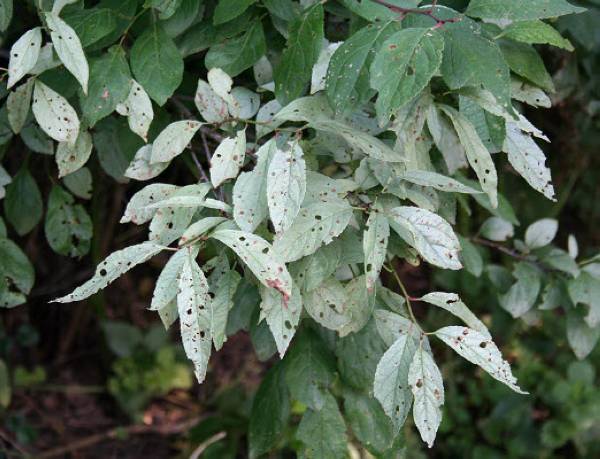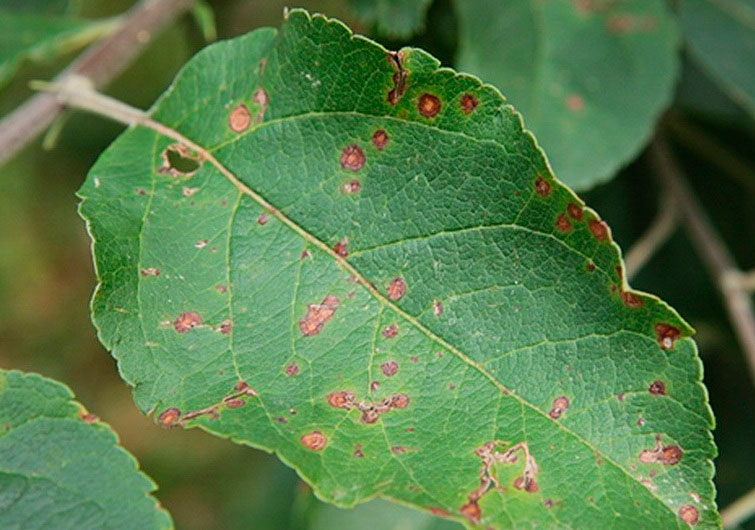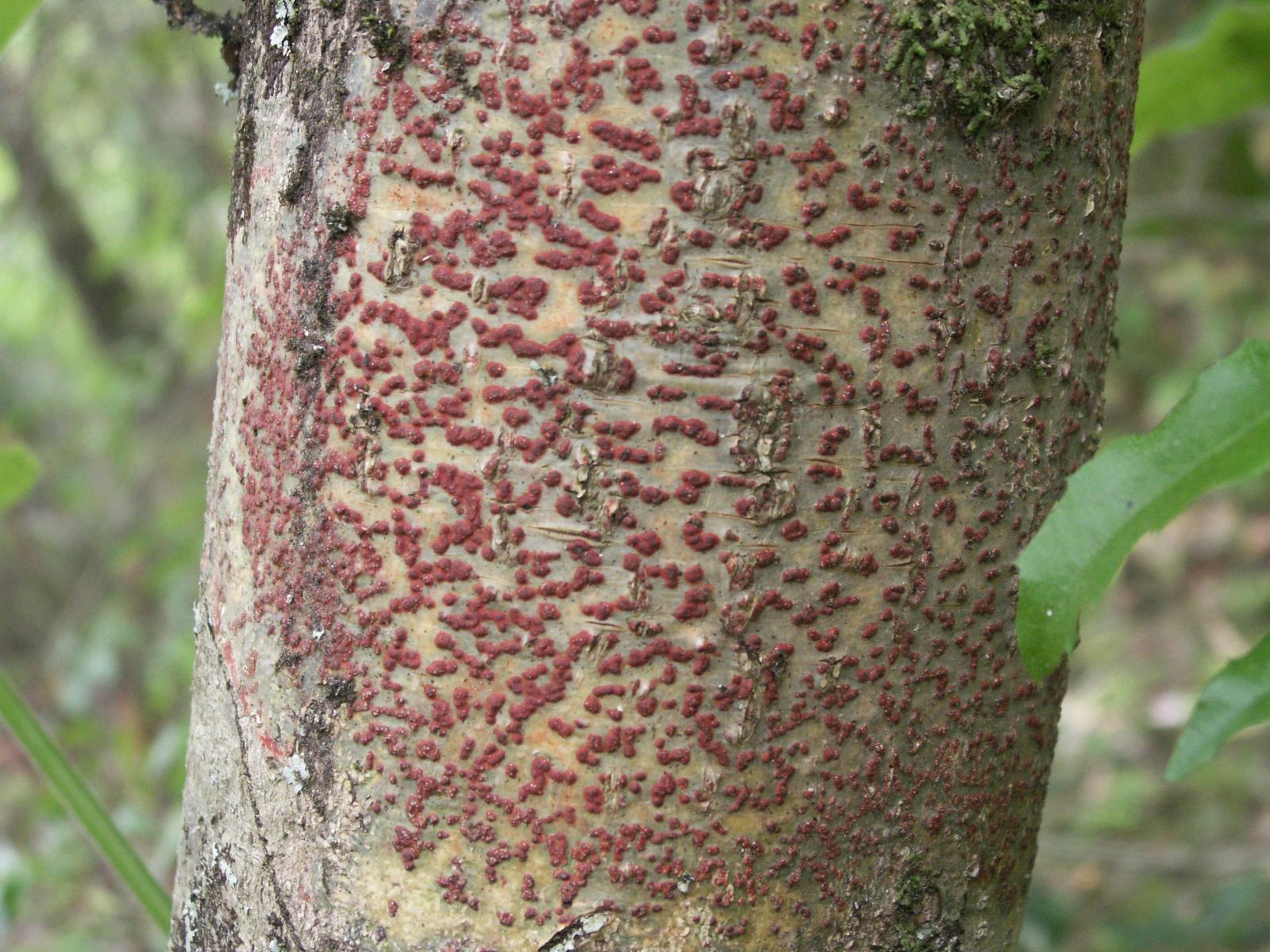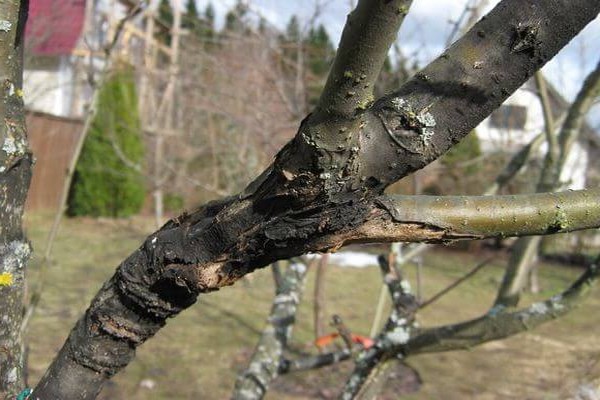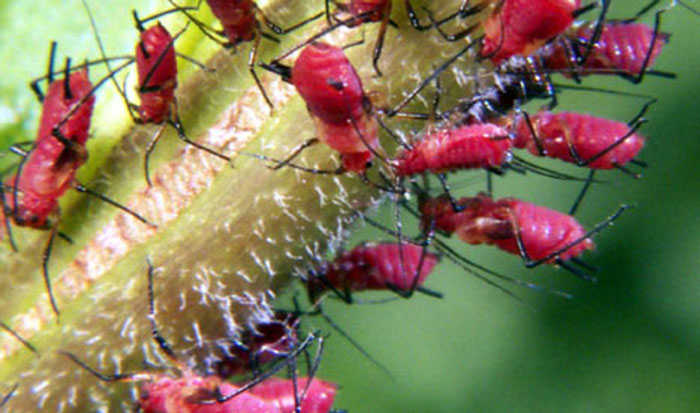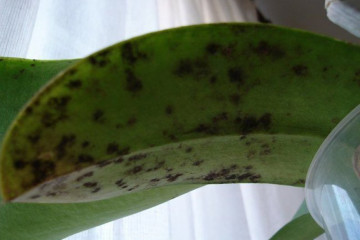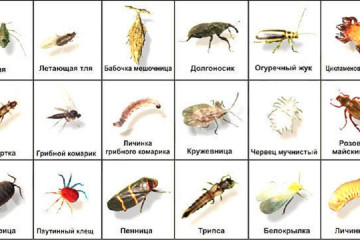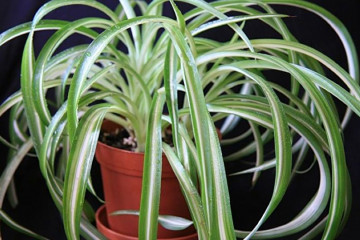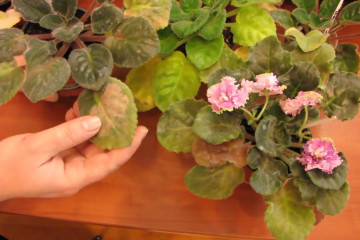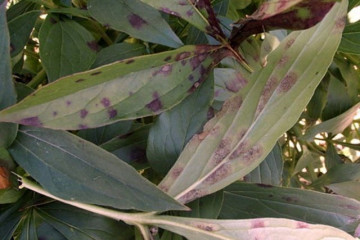Diseases of apple trees: description and control of them, how to treat spots on the leaves
Content:
Each fruit tree is susceptible to different bacterial damage and fungi. To save the plant, it is important to determine the genus of the apple tree disease at the initial stage. To do this, you should stock up on knowledge and be able to identify the symptoms of apple tree disease.
Diseases in which the leaves are curled
Sometimes the tree rolls its leaves. This is due to certain reasons. It is worth considering the most common apple diseases and descriptions, learning how to carry out preventive measures.
Milky glitter on the leaves of the apple tree
Air cavities form under the skin of the leaf, because of this, a silvery tint appears on the leaves and they die off. The disease develops over 3-4 years, then the tree dies.
These apple diseases arise from:
- freezing of wood at the onset of spring;
- sunburn;
- damage to the root system by agricultural implements;
- damage to crops by insects.
The disease develops due to:
- cold and rainy autumn;
- lack of mineral salts in the apple tree.
Brown spot or phyllostictosis
Mosaic spots of a dark yellow, brown, dark brown or gray hue appear on the leaves, their shape can be round or angular. Small black dots are visible on them, which are called mushroom pycnidia. The affected tissues die off, the epidermis exfoliates in the form of a thin transparent film. The nature of the lesion resembles burns, because of this, their appearance can be mistaken for damage by pesticides in high concentrations.
The main symptom of the disease is a speck with a light middle and browning around the edges. The disease can appear due to thickened plantings and high humidity.
How to cure an apple tree:
- destroy fallen leaves;
- spray crops during the growing season with fungicides.
Sooty fungus
Sooty fungus is a disease caused by the microorganism Aspergillus. It can contribute to the development of a number of diseases in humans and plants, and often affects weakened living organisms. This type of fungal growth is accompanied by aphids and other insects that leave sugary secretions. The first measure to combat the disease is the destruction of pests that infect plants. It is imperative to treat a viral fungus, because it clogs the pores of plants, interferes with the normal respiration of leaves, and suppresses natural photosynthesis.
Rosette-small-leaved
Not everyone knows when there are brown spots on the leaves of an apple tree - what kind of disease it is.The characteristic signs can appear on the leaves, which become smaller, become long. Affected shoots have thick leaves, and their internodes are quite shortened, yellow spots appear on the leaves of the apple tree. Rosettes of both deformed and healthy leaves are formed at the tops. Flower buds in a diseased tree are rarely laid, the fruits are small, tasteless and may look bad. It is not worth wasting time on their storage.
Rust on the apple tree
Rustiness on an apple or pear appears in the middle of summer. Reddish spots on the outside of the leaves contribute to the formation of star-shaped growths and are a sign of so-called rust. After the leaves fall off, and the tree loses its immunity to cold weather. Often, the orange color appears when a juniper grows nearby. Many are interested in what to do if the apple tree is sick. Those who do not know how to treat an apple tree should use various fungicides.
Milky juice
Milky sap is a disease of the deciduous and trunk of a tree. The leaves become covered with bubbles, a silvery tint appears on each air cavity, and a slow lesion of the stem part occurs. The bark is also infected and can crack. The disease develops in a rapid way, in a short period the leaves fall off, the apple tree weakens. A preventive measure against milky shine is the correct preparation of the tree for winter. Whitewashing can be used to protect the trunk from contamination. Dark spots on the bark must be removed immediately, and bare areas must be treated with special glue.
Diseases of the bark and trunk of apple trees, their treatment
To help a tree get rid of a disease, you need to find out the cause of the damage.
Rot of the root collar or late blight
The fungus is of particular importance as the causative agent of phytophthora of the root collar of an apple tree. The disease starts with a small area of rot at the graft site. After it contributes to the destruction of the overall areas of the cortex, sometimes leads to complete damage to the vascular system. These affected areas serve as favorable sources of fruit infestation.
For treatment, it is worth cleaning the lesion site on the boles to healthy wood. You should also disinfect with a 1% solution of copper sulfate and cover with garden varnish.
Root cancer
On the main and lateral roots, as well as on the root collar, tumor growths called galls appear. They are initially small, have a smooth surface and a soft texture. In stages, galls grow and reach 25 mm, then harden, acquire a bumpy surface. In autumn, the growths are often destroyed.
For prevention, only healthy planting material should be used. Before planting, you need to cut off the tumor-like formations, immediately treat the wounds with a solution of copper sulfate in a volume of 100 g per 10 liters of water.
Cytosporosis or infectious bark drying
Signs of cytosporosis are often observed during the flowering period of the crop in the first half of summer. At this time, the bark becomes a brownish-burgundy hue and swellings in the form of bubbles form on it, which represent the mushroom mycelium. Dead tissue is poorly separated from living wood; cracks and chips appear at the border of infected and healthy areas of the bark. The focus of infection can increase in size, covering the branch in a ring. As a result, the entire upper part gradually dies off.
In order to cure a seedling, you can apply the following measures:
- burn infected foci;
- clean up damaged areas;
- the places of cuts and cleaning should be treated with an antiseptic and covered with garden varnish.
To disinfect wood, it is worth using a solution of copper sulfate. It is enough to dilute 30 g in 1 liter of water.
Shrinking branches or tuberculariosis
The disease contributes to necrotic necrosis of the cortex. During the growing season, the leaves and shoots become brown and dry out. Numerous brick-red sporulation pads with a diameter of up to 2 mm appear on the surface of the affected areas of the bark. Then they turn dark and dry out. The development of the fungus contributes to the death of the bark and bast of individual shoots. The infection persists in the bark of the affected shoots.
To fight, it is worth using disinfection with a 1% solution of copper sulfate and covering the affected areas with oil paint based on natural drying oil.
Fruit diseases or why fruits rot and apples burst
Fresh fruits can deteriorate due to diseases that overtook them while they were still on the tree.
Fruit rot - moniliosis on an apple tree
Only the blossoming leaves are affected first. The incubation period is 10 days, then the inflorescences turn brown, wither and die. In a warm and rainy period, conidial sporulation of the fungus in the form of small white pustules is formed on the underside of the leaves, petioles and pedicels. The apples develop brown spots that cover the entire surface of the fruit.
Apple fungus (scab)
The disease on the leaves and fruits is manifested under the influence of the marsupial fungus Venturia inaequalis. Scab is widespread in temperate climates, especially in regions with cold, wet springs. In favorable years for the development of the fungus, the disease reduces the quality and yield of apples.
Signs of powdery mildew
When a disease occurs, shoots, leaves, buds and inflorescences are covered with a dirty white powdery bloom, which turns brown and turns into black spots. After that, the growth of shoots stops, the leaves dry out and fall off. Infected inflorescences do not set fruit. On affected fruits, the disease manifests itself in the form of a net. The pathogen hibernates in the kidneys, spreading by spores.
Downy mildew (downy mildew)
The affected parts of the plant lag behind in growth, the stems become thin, the leaves are small and chlorotic, a whitish bloom forms on the underside, which turns gray after a while.
Apple tree pests and methods of dealing with them
In addition to diseases, pests can be seen on the apple tree.
Apple moth
Fruits damaged by the apple moth fall prematurely and rot. To combat it, it is worth using chemicals. The most effective is the installation of pheromone traps.
Blood aphid
Due to aphids, nodular thickenings, cracks and ulcers form on the bark. To remove the pest, it is worth cutting and destroying diseased shoots and spraying the culture with special solutions.
Apple moth
The apple moth will damage all the greenery on the tree. In a mass attack, it is worth using the chemical method. Single traces of the pest can be removed by removing the affected parts of the crop.
Apple blossom beetle
This pest is a beetle 3.5-5 mm in size, dark brown in color, which damages the plant during the opening of fruit buds. In order to reduce the number of flower beetles, it is worthwhile to loosen the trunk circles in a timely manner, destroy fallen leaves, and remove diseased and dry branches.
Apple sawfly
The pest feeds on pollen and nectar. To combat it, you need to spray the crowns with pyrethroids and organophosphorus compounds.
Gall midge apple leaf
Gall midge is a dipteran insect that lays eggs on young, blossoming leaves.To prevent the spread of the pest, you need to spray the trees with biological pesticides.
Infection prevention and precautions
The main preventive measure, in order to avoid disease and pests of the apple tree, is the competent choice of a place for laying an ornamental garden. The soil should be well-drained and free of forest and wild fruit plantations. It is also recommended to carry out timely spraying with biological pesticides, this will help to avoid the disease of young apple trees.
In order not to have to deal with the neglected state of the garden, it is necessary to provide proper care for the crops. Timely identification of disease or pests will help save trees.

